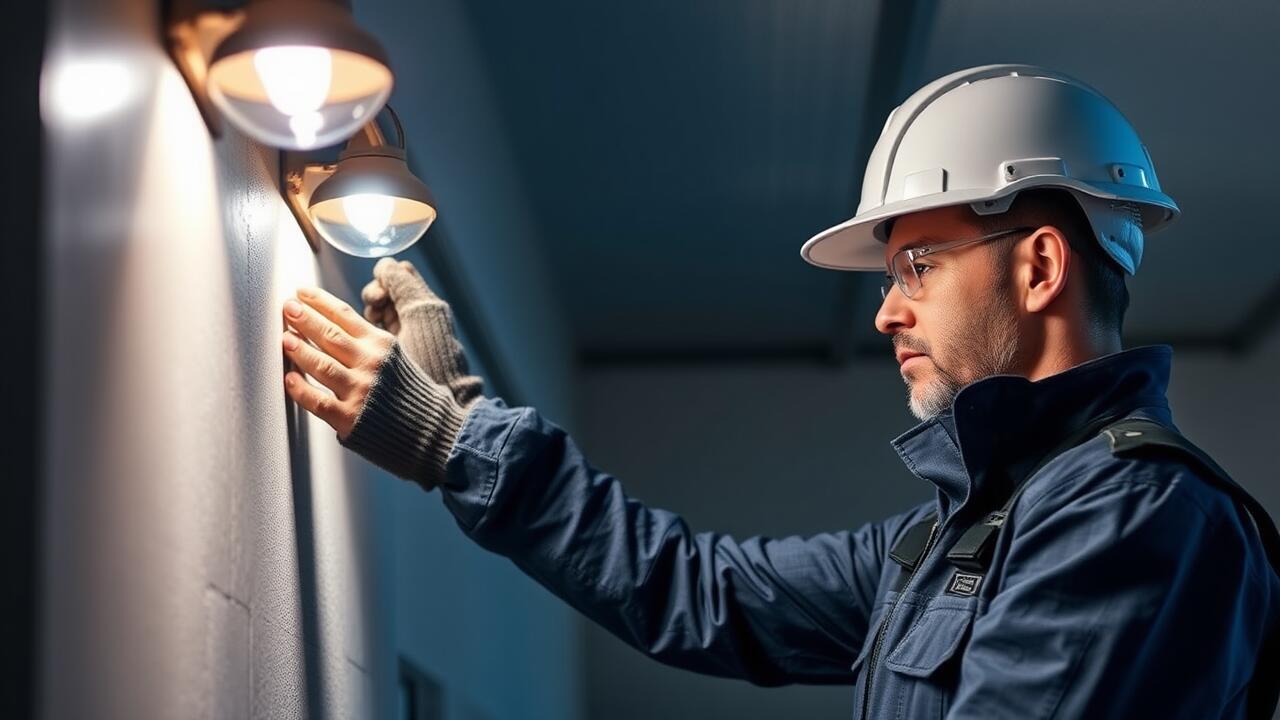
Practical Tips for Implementing Ambient Lighting
Creating an inviting atmosphere at home often starts with ambient lighting. Start by assessing the different areas in your space, considering how they are used at various times of the day. Use a mix of light sources to achieve a balanced glow that enhances the room's features. Floor lamps or table lamps can provide additional light without relying solely on overhead fixtures, fostering warmth and comfort throughout your home. When planning your setup, think about the scale of each piece and how it fits within your overall design.
When seeking professional assistance for your lighting needs, consider services like Lighting Installation Westchase, Houston. Experienced electricians can help you choose the right fixtures and placements to maximize your home’s aesthetic appeal. They understand the importance of layering light sources and can guide you in selecting dimmers for adjustable brightness. This personalized approach makes it easier to create the perfect ambiance that complements your interior design while ensuring safety and functionality.
Choosing the Right Fixtures and Bulbs
Selecting the appropriate fixtures and bulbs plays a crucial role in enhancing the overall ambiance of a home. Fixtures come in various styles and designs, allowing homeowners to express their personal taste while complementing existing décor. For areas that require flexible lighting options, dimmable fixtures provide versatility that can adapt to different moods and activities. When considering bulbs, it is essential to evaluate their brightness and energy efficiency to achieve a balance between aesthetics and functionality.
The types of bulbs available today offer a spectrum of choices, from traditional incandescent to energy-saving LEDs. LED bulbs have gained popularity due to their longevity and lower energy consumption. In regions like Westchase, Houston, where modern homes often embrace innovative designs, opting for energy-efficient options aligns with both aesthetic appeal and practicality. Proper lighting installation can significantly impact the feel of each room, creating inviting spaces that are both stylish and functional.
Common Mistakes in Ambient Lighting Design
A common misconception in ambient lighting design is relying solely on overhead fixtures for illumination. This approach often results in harsh shadows and uneven lighting, which can detract from the overall aesthetic of a room. Effective ambient lighting should embrace a layered approach, incorporating various sources such as floor lamps, table lamps, and wall sconces alongside overhead lights. By diversifying light sources, homeowners can create a more inviting and balanced environment, enhancing both functionality and visual appeal.
Another frequent mistake involves neglecting the importance of dimmers. By failing to install dimmable fixtures, homeowners miss out on the flexibility needed to adjust lighting levels for different times of day or activities. For those considering new lighting options, professionals specializing in Lighting Installation Westchase, Houston, can provide valuable insights on how dimmers and multiple light sources can transform a space. Thoughtful integration of these elements significantly elevates the ambiance of any room.
Avoiding Overhead Only Lighting
Overhead lighting often dominates many spaces, yet relying solely on this type of illumination can create unflattering shadows and an uninviting atmosphere. A well-designed lighting scheme should employ various sources to enhance the overall ambiance. Incorporating wall sconces, floor lamps, and table lamps allows for multiple layers of light, which can make a room feel more dynamic and inviting. By diversifying your light sources, you create a more engaging environment that responds to the different activities and moods throughout the day.
Implementing a thoughtful lighting plan goes beyond aesthetics; it also affects functionality. When planning your Lighting Installation Westchase, Houston, consider how the combination of ambient, task, and accent lighting can work together. Task lighting is essential for focused activities like reading or cooking, while accent lighting highlights artwork and architectural features. Failing to balance these elements may lead to discomfort and inefficiency in your living space, making it essential to carefully consider each type of lighting in your design.
The Role of Color Temperature
Color temperature plays a significant role in creating the desired ambiance within a home. Measured in Kelvin (K), it informs us whether a light source emits warm or cool tones. Warm light, typically ranging from 2700K to 3000K, produces a cozy and inviting atmosphere, perfect for living rooms and bedrooms. In contrast, cool light, with a temperature of 4000K and above, can bring clarity and energy to workspaces and kitchens. Understanding these differences helps homeowners select the appropriate fixtures and bulbs to achieve their aesthetic goals.
When considering lighting installation in Westchase, Houston, it’s essential to align the color temperature with the functions of each room. For instance, warmer tones in gathering areas foster a sense of comfort, while cooler tones enhance focus in areas meant for productivity. By thoughtfully choosing the right color temperature, homeowners can significantly enhance their environment, creating spaces that not only look beautiful but also feel right for their intended activities.
Warm vs. Cool Light Tones
Color temperature plays a critical role in shaping the atmosphere of a home. Warm light tones, typically ranging from 2700K to 3000K, create a cozy and inviting environment, making spaces feel more intimate. This type of lighting is ideal for areas where relaxation is key, such as bedrooms and living rooms. It often complements earthy tones in decor, enhancing the warmth of wooden furniture and textiles. In contrast, cool light tones, usually between 3500K and 4100K, lend a crisp and modern feel to spaces. This lighting is well-suited for kitchens and work areas, promoting alertness and focus.
Selecting the right temperature for lighting requires understanding the intended use of each space. Homeowners in Westchase, Houston, can maximize their home aesthetics by carefully considering the balance of warm and cool lights throughout their living areas. Proper placement and combination of fixtures enhance the room’s functionality while elevating its visual appeal. Integrating diverse lighting temperatures can draw attention to design elements, creating a harmonious blend that defines unique spaces within the home.
FAQS
What is ambient lighting?
Ambient lighting refers to the general illumination in a space that provides a comfortable level of brightness without causing glare. It sets the overall mood and atmosphere in a room.
How can I choose the right fixtures and bulbs for my home?
When selecting fixtures and bulbs, consider the style of your room, the size of the space, and the desired brightness level. Opt for energy-efficient LED bulbs and fixtures that complement your decor while providing the right amount of light.
What are some common mistakes to avoid in ambient lighting design?
Common mistakes include relying solely on overhead lighting, neglecting to layer light sources, and using bulbs with inappropriate color temperatures. It’s also important to avoid harsh shadows and glare.
What is the difference between warm and cool light tones?
Warm light tones (typically between 2700K to 3000K) create a cozy and inviting atmosphere, while cool light tones (around 4000K to 5000K) produce a brighter, more energizing effect. The choice depends on the mood you want to achieve in a space.
How can I effectively use ambient lighting to enhance my home aesthetics?
To enhance home aesthetics, layer your lighting by combining ambient, task, and accent lights. Use dimmers for flexibility, choose fixtures that match your decor, and pay attention to the color temperature to create a harmonious ambiance.





